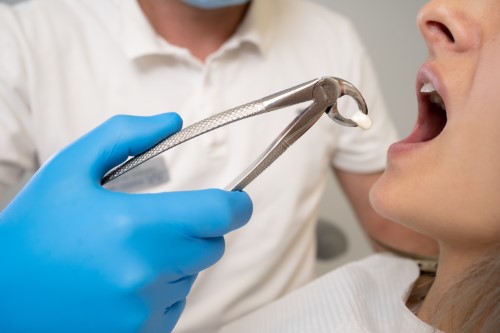Extractions

Our Process
Initial Consultation and Examination
The process starts with a thorough examination of the tooth in question, including X-rays, to determine the best course of action for extraction.
Preparation for Extraction
To ensure comfort, local anesthesia is administered around the area of the tooth to be extracted, numbing it and the surrounding tissues.
Extraction Procedure
The dentist uses specialized instruments to gently rock the tooth back and forth until it is loose enough to be completely removed from the socket.
If the tooth is impacted or difficult to remove, the dentist may perform a more complex procedure, which could involve removing gum tissue or bone.
Post-Extraction Care
After the tooth is removed, a gauze pad is placed over the socket to help control bleeding and to encourage a blood clot to form.
The dentist provides detailed instructions on how to care for the extraction site, including oral hygiene practices, foods to avoid, and how to manage pain and swelling.
Recovery and Follow-Up
It typically takes a few days to recover from a tooth extraction. The dentist may prescribe painkillers and recommend cold compresses for any swelling.
A follow-up appointment may be scheduled to ensure proper healing and to discuss any further treatment if necessary, such as a dental implant or bridge.
